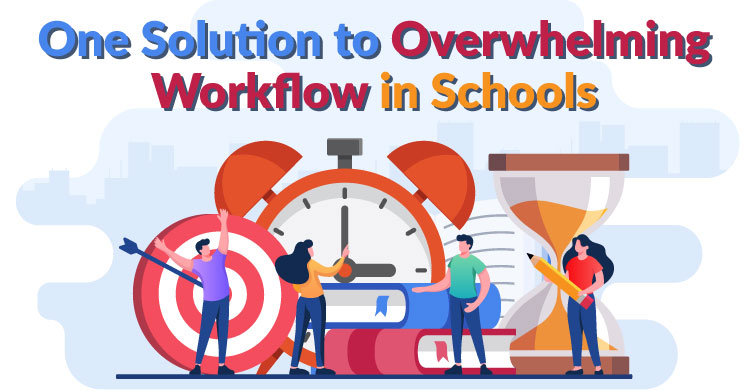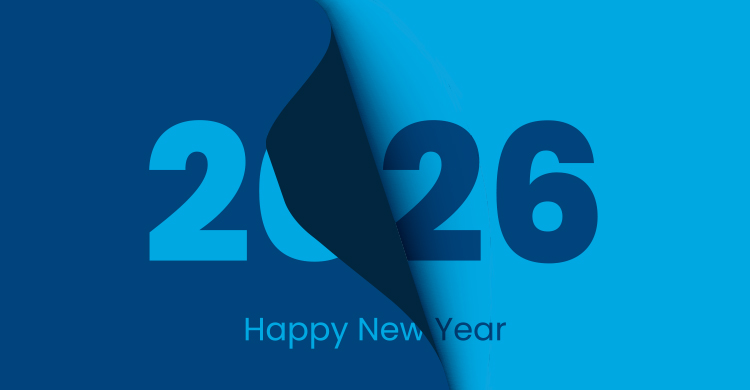Never in a million years did I think Netflix would have solutions for the exhaustive workflow issues of educators, but it appears I may be wrong. Allow me to explain.
Triage – a term previously reserved for emergency and trauma patients – has made its way into the vernacular of several popular medical dramas on Netflix, such as Grey’s Anatomy, The Good Doctor, and House. Triage is a nice-sounding word, I suppose, carrying with it some strong scientific connotations. It might even add a slice of intellectual legitimacy to the shows I mentioned, balancing out their quirky relationship dramas and nearly impossible organ transplants that seem to occur every other episode. Whatever the fascination it holds in popular Netflix dramas, triage brings many benefits. I’m thrilled to see it enhance the work-life balance of overwhelmed educators who embrace it.
What is the concept of triage?
Triage is a method to prioritize workflow in a quick, thoughtful, and guilt-free manner. The concept behind it is easy to understand but challenging to embrace.
For instance, it’s impossible for an individual to manage numerous tasks for a large number of stakeholders simultaneously.
Human limitations exist, and they aren’t going away anytime soon. Yet many of us, for various reasons, still try to address all the needs around us in a short amount of time. When we attempt to do this, we typically fall prey to our limitations and dilute our ability to complete any task well. This often leads to teacher burnout. Learning how to prevent burnout by applying the concept of triage in your classrooms will highly benefit you and those around you.
What triage operations can provide
What’s needed is a thoughtful approach that guides the actions we take within the limited timeframe of our work day. Triage operations can provide that for us by:
- Identifying tasks that can be managed within a fixed time interval
- Prioritizing the importance of these tasks using a universally agreed-upon metric
- Developing a clear plan for tackling tasks in order of priority: first, second, third, and so on
This approach will streamline our workflow and bring order to chaotic work environments. However, there is often a common concern for those new to triage: What happens if our fixed time interval runs out and some tasks still remain? What should we do now? The answer is simple: You go home. To be more specific, you go home with the knowledge that you did an excellent job today because evidence shows that you tackled the most important priorities in the prescribed order. As such, whatever you leave behind at the end of your fixed time interval is acceptable if you triaged correctly.
Now, if that seems far-fetched, I promise you that it’s not – triage operations have been governing emergency departments and ambulance systems in most first-world nations since the times of Napoleon. That’s a pretty resilient set of operations.
How does triage work, and can educators implement it?
Triage already exists in school and happens every day. Moreover, teachers and principals excel at it. Here is an example:
Lori is bouncing gingerly in the back of the first-grade classroom, which is her usual signal that she needs the bathroom, while Aiden tosses pencils at the classroom turtle. Meanwhile, Finley opens a peanut butter granola bar next to Wyatt, the one student in your class who has an EpiPen for a terrible nut allergy.
Sounds chaotic? As a teacher, you know how to do the following:
- Secure the granola bar from Finley while verbally redirecting Aiden from tossing pencils
- Watch Wyatt, who currently looks fine, walk thirty feet down the hallway to the nurse’s office
- Motion to Lori that she may now bounce her way to the restroom
- Continue passing out papers
This example demonstrates the necessary prioritization of hazards and how to calmly manage them individually. But if you look at this scenario through the eyes of a physician, the classroom teacher’s response follows the recommended patient prioritization of an emergency department.
Medical triage algorithm applied to classroom management
Level 1 – Immediate: Currently life-threatening
Level 2 – Emergency: Potential for life-threatening (Wyatt’s severe allergy)
Level 3 – Urgent: Not life-threatening; treat when able (Aiden tossing pencils)
Level 4 – Semi-urgent: Not life-threatening; minimal care (Lori’s need for a restroom)
Level 5 – Nonurgent: Not worrisome; routine care needed (Passing out papers)
So, if teachers can naturally utilize triage skills in the classroom, it prompts the following question: Why do staff members not utilize triage for their own advantage? They could triage their workflow and mitigate a lot of professional chaos, right? Let me show you how. I’ll use the healthcare model of triage and scale it to school operations. Take note that the sense of urgency remains the same.
An educational version of triage

So, what benefits emerge from educator triage?
Educational triage creates a new approach to workflow and offers three key benefits.
Benefit #1 – Efficiency
With triage, one of the main benefits is that you will no longer misuse small intervals of time for random tasks. Rather, you will look to see if there are level 1 (immediate) tasks and continue to move down the operations guideline, addressing one level at a time until you hit level 5 (flexible). By eliminating distractions and unnecessary actions, you will boost your efficiency.
Minor tasks in levels 4 (relevant) and 5 (flexible) can wait until either 1.) all of your level 1 (immediate) through level 3 (urgent) tasks are completed or 2.) can wait until tomorrow, especially if completing level 1-level 3 tasks took all day. This approach, akin to medical triage, ensures that your time at school focuses on the most crucial issues each day.
For those of you who flinch at the idea of “leaving things for tomorrow,” please know that I hear you, and I appreciate you. It’s nice to have it “all done” before you head home. But also consider the following: when I think about my 10 years in the classroom, every time I had students help set up a chemistry lab while I gave instructions or had a student-run to make copies for me, it still turned out okay. Maybe not the way I envisioned it, and definitely not as seamless, but the students still got what they needed. State assessments, ACT scores, and student feedback confirmed this for me, and it’s widely acknowledged that these metrics are quite reliable.
Using triage operations enabled me to end each day guilt-free, allowing me to enjoy time with my family and often gain an extra hour of sleep. It made me a much better teacher in terms of energy and passion the following day.
Benefit #2 – Confidence and stress mitigation
Triage alleviates stress through confident decision-making – it’s just a matter of placing tasks in the correct category and following the protocol. The ability to prioritize tasks is a huge benefit for educators, as unexpected events occur in education every day, just like they do in medicine. But take comfort in the fact that triage always has a reasonable answer to “What is the next step?” and “What should be placed on hold?” Issues are dealt with rapidly in a singular fashion and result in the best possible outcomes. While triage isn’t necessarily easy, it does alleviate the emotional toll of decision-making, enabling you to concentrate on the task at hand with evidence-based reasoning guiding your actions.
Benefit #3 – Resolving guilt
As teachers, many of us tend to prioritize our students’ needs over our own, but this can lead to excessive stress and a decrease in teacher retention. Please be mindful not to let your compassionate heart and desire to care for others extend too far, carrying the entire weight of their school life on your shoulders. This approach is not realistic and often leads to teacher burnout. You need to have a definitive end of the day for your own personal teacher wellness, something we should all safeguard.
Ready to improve your physical, mental, emotional, and social well-being both inside and outside of school? Check out this bestseller Educator Wellness: A Guide for Sustaining Physical, Mental, Emotional, and Social Well-Being by Tina H. Boogren and Timothy D. Kanold. This reflective journal provides the ideas and guidance you need to support you on your wellness journey.
As such, I don’t think there is anything wrong with a teacher arriving well-rested in the morning to teach an imperfect activity and find papers still waiting to be graded, assuming they also arrive with tremendous energy and enthusiasm for their job. Those are the teachers that often make an impact and stand the test of time.
Prioritizing workflow
But if you still harbor guilty feelings about the idea of prioritizing workflow and “doing slightly less,” consider one last important perspective:
- Working at 110% capacity for two to three years is likely to lead to severe burnout, which is detrimental to you, the district, and the community.
- Delivering 90% of your potential and enjoying 20 years in the district – now that’s a huge win for everyone.
Good luck triaging the remainder of your educational journey. May the efficiency, newfound confidence, and resolution of guilt lead you to the same happiness that you provide your students!
About the educator
Christopher Jenson, MD, is a senior adviser for public health concerns in school districts and educational operations. Dr. Jenson brings a unique set of skills, knowledge, and experiences to his advisory role.






